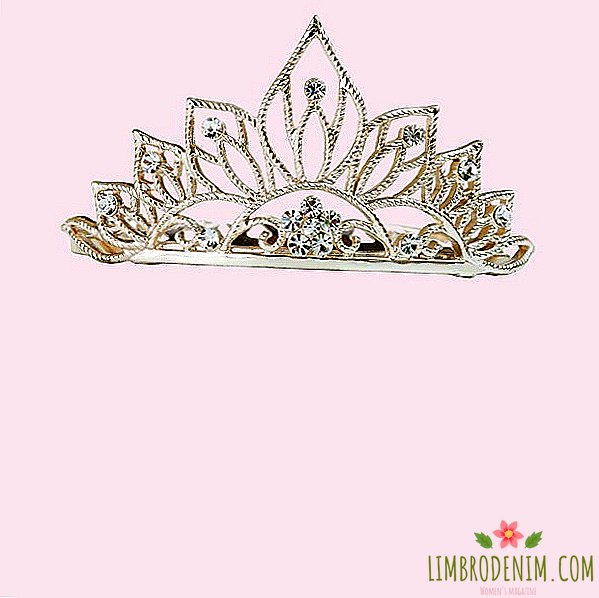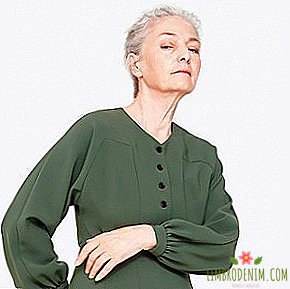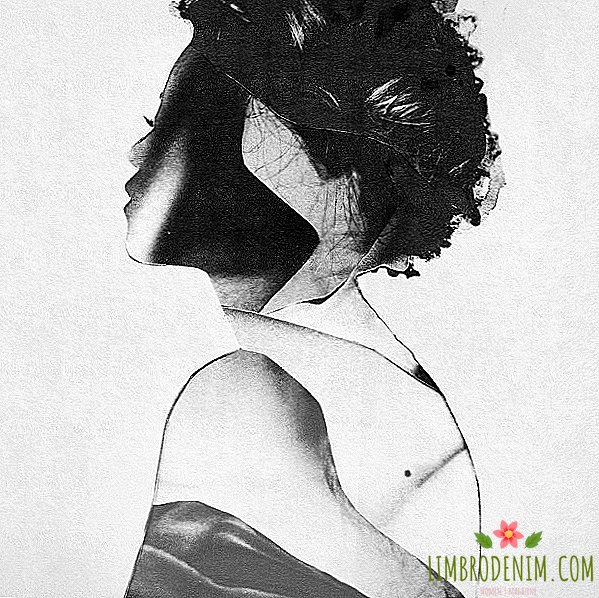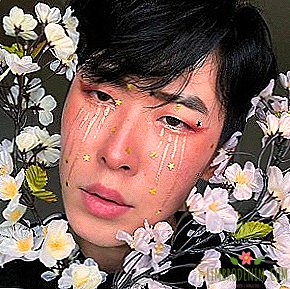How to make billions on the myth of the Parisian woman
It seems they are doing everything better than us: they dress, paint, brush their teeth, eat, raise children and even grow old somehow in a special way. That's right, unlike the women of the rest of the world. Over the past decade, the abstract resident of France has become the most authoritative expert in the field of lifestyle: beauty secrets learned from French women and Parisians are guaranteed to provide clickbate content to the most unpopular online resource, and a collection of commonplace tips on how to wear a little black dress and choose croissants, instantly snapping up from the shelves of bookstores, one has only to place on its cover the Eiffel Tower and the female silhouette.

The symbol of France for almost three centuries remains a female figure, so there is nothing strange in that along with cheeses and champagne the myth of the ideal woman turned out to be one of the main export products of the French state. But if during the XVIII-XIX centuries, the brave folk heroine Marianna was the personification of the best qualities, then with the development of the fashion and beauty industry, her image in the minds of the broad masses was supplanted by a set of cliches, flat stamps and unattainable standards.
Legendary French femininity systematically became a commercial brand and trademark. “Mysterious”, “exquisite”, “flawless in its naturalness”, “sophisticated seducer” - so the French perfume and fashion houses from Guerlain to Chanel promoted their products and the national female canon in the last century. The literal translation of the advertising text, which in 2014 was accompanied by the release of the new lipstick KissKiss Guerlain, shows that the traditions of such positioning are strong to this day: "Her age does not matter: she has an incredible style. And sex appeal. She floats through the streets of Paris on She looks elegant in everything and never overdoes. Her makeup is always flawless and natural, she is an expert in the art of carefree seduction. In her fingers she pinches the weapon of her deadly seduction. " Yes, you did not think the word "seduction" is used here simultaneously in two adjacent sentences.
The image of a woman child, deprived of any distinct personal characteristics, apart from the notorious seductiveness and the ability to effectively wear dresses in a Vichy box, was also successfully praised by French cinema. Light of esoteric fog shrouded any of the heroines of Brigitte Bardot and Jane Birkin, while for men it is always a “beautiful creature” and a “charming child”, and for rivals a worthless whimsy.


Its main function is to serve itself as an obvious object of desire and seduce again and again. To all the hackneyed notions about a real Frenchwoman as a kind of "trick" were the performers of the ye-yee music genre, like Francoise Hardy and Sylvi Vartan. The image of the "true Frenchwoman" built the career of another Francoise - Sagan - and Catherine Deneuve. Is it any wonder that today's pop characters from Vanessa Paradis and celebrity street style Carolyn de Maigret to journalist Sophie Fontanel, who wrote a dozen methodological guides on behalf of a resident of Paris, mercilessly exploit and monetize their own French?
I must say that the mystery really at some point was one of the defining features of French women. The branded pose "there is no secret, we are just naturally beautiful and skinny" a priori provides any Frenchwoman with the status of a beauty enigma, an unattainable ideal, a goddess who owns the magic art de vivre recipe. And the magic, as you know, is great for sale. And this is quite an amazing moment: while in other countries there is an active struggle against racial stereotypes and cultural appropriation, in France the objectification of the national female image and its active commercial use continue.
The author of the impressive study "How to Sell a Billion-Dollar Myth Like a French Girl" rightly notes that today a huge amount of money is spinning around the skillfully built image of true La Parisienne: the mythical inhabitant of a sunny attic in Saint-Germain, running out in her beloved vest for a fresh macaroni in the neighboring shop helps to earn all the country's marketplaces at once - from pharmacies to pastry shops. Not to mention the book, film, fashion and cosmetic industries.

A separate item should be a tendency to disguise foreign brands initially as French: if the proud name of the fricative “p” sounds in the brand name, this automatically means something “cool”, “delicious” and “sweet” at the same time. So - well bought.
However, such a social order in which a woman is forced to create a veil of mystery and understatement around herself is also conditioned by the national mentality. In anthropology, there are the concepts of "culture of shame" and "culture of guilt": within the first person tends to comply with social standards and at the same time carefully conceal the efforts made and internal experiences, and the second, on the contrary, implies almost public reflection on any life circumstances. The sense of guilt poisons all spheres of life — from raising the offspring to food — to the average Anglo-American, existing in the realities of the “culture of guilt,” and, conversely, to a completely unfamiliar hypothetical French woman, the character of all these countless benefits on how to make friends, have sex and raise children correct, french style. Such a lyrical heroine has a flexible relationship with categories of truth and lies: die, but do not confess how difficult your external well-being is given to you, your supposedly natural beauty and innate harmony.
It is significant that the prevailing pattern of perception of a French woman as the personification of natural thinness and grace harms first of all the residents of the country. In December 2013, an article titled "The Perils of Being Fat, Female and French" was published on the BBC website, in which frank statements by Paris residents about public opinion about excess weight are given. "If you are fat, you will not have work, but if you are thin, you have charm and style, you will be appreciated," "This is real tyranny, in France, thinness is equal to success," "In stores they look askance, because I I do not fit into local standards "- the whole text is replete with such statements.


It would seem that such installations are unthinkable in the conditions of a developed civilization, where "diversity", "tolerance" and "bodipositive" become defining concepts. But, paradoxically, the progressive world refuses to think about it, and the unviable clichés about the life of a French woman continue their confident existence.
All in the same article "How to Sell a Billion-Dollar strata of society and has nothing to do with 99% of the female population of the country. In reality, the life of a modern French woman is hardly amenable to such a flat averaging, not to mention the fact that a substantial part of the female population of France belongs to very different ethnic groups. But, as it turns out, the collective dream of a superwoman endowed with Vedic knowledge of how to be refined and seductive is still relevant and economically in demand even in the era of confidently winning feminism.
Photo: Rouje, Inès de la Fressange, Chanel, Peninsula Films





